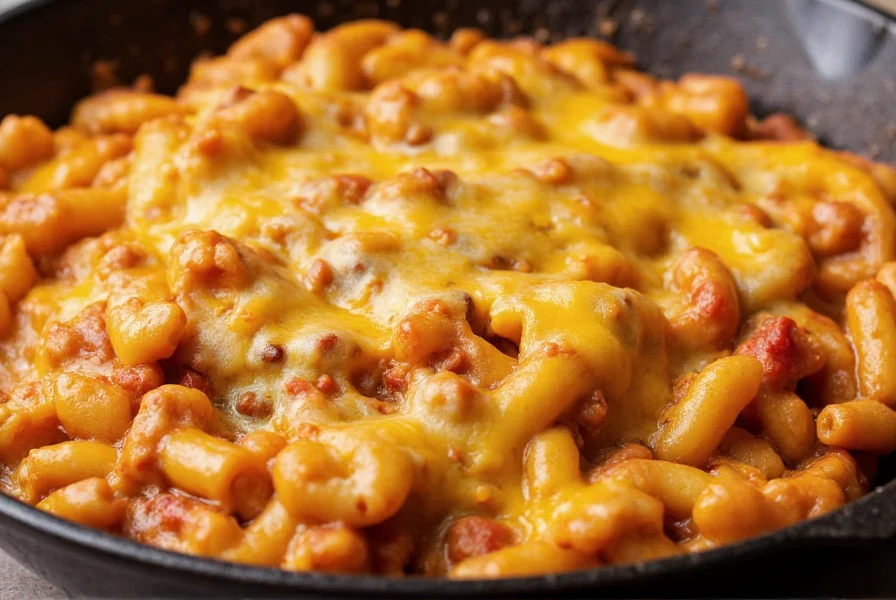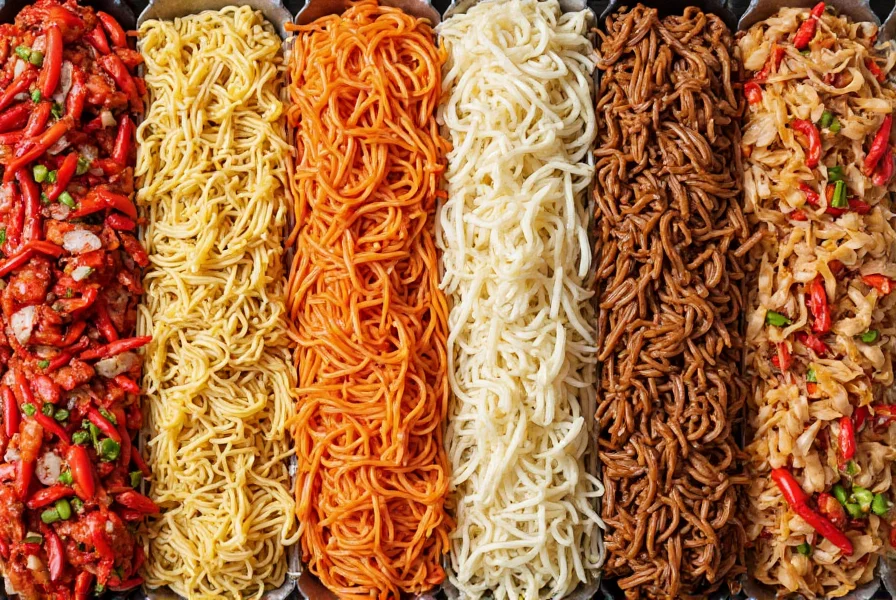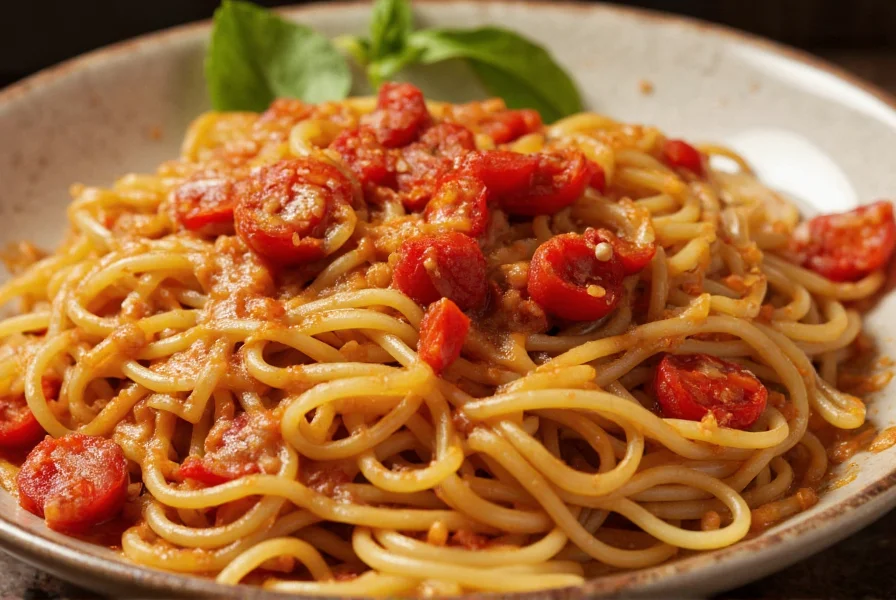When considering chili and noodles combinations, the synergy between these elements creates a meal greater than the sum of its parts. The robust flavors of chili—typically featuring beans, meat, tomatoes, and spices—find an ideal counterpart in noodles' versatile texture and mild flavor profile. This pairing delivers a nutritionally balanced dish with protein from the chili components and carbohydrates from the noodles, making it both satisfying and practical for everyday cooking.
The Culinary Science Behind Chili and Noodles
Understanding why chili pairs well with noodles requires examining basic food chemistry. Noodles contain starch that naturally absorbs and tempers capsaicin—the compound responsible for chili heat—without eliminating the flavor complexity. This chemical interaction allows heat-sensitive eaters to enjoy spicier chili preparations while maintaining the dish's integrity.
Different noodle varieties interact uniquely with chili. Wheat-based noodles like spaghetti or egg noodles provide a neutral canvas that absorbs chili flavors beautifully. Asian rice noodles offer a lighter texture that works well with broth-based chili preparations. Even unconventional options like zucchini noodles can create satisfying healthy chili noodle alternatives for low-carb diets.
Global Variations of Chili and Noodles
The combination of chili and noodles appears in culinary traditions worldwide, each with distinctive characteristics:
| Cultural Variation | Key Characteristics | Distinctive Ingredients |
|---|---|---|
| American Chili Mac | Hearty, thick chili served over macaroni | Ground beef, kidney beans, cheddar cheese topping |
| Sichuan Dan Dan Noodles | Bright red chili oil-infused broth with noodles | Chili oil, Sichuan peppercorns, minced pork |
| Mexican Fideo Seco | Dry chili-infused noodle casserole | Broken spaghetti, tomato-chili sauce, melted cheese |
| Korean Budae Jjigae | "Army stew" featuring chili broth with various noodles | Spicy gochujang broth, ramen noodles, processed meats |

Best Noodle Types for Different Chili Styles
Selecting the right noodles for chili recipes significantly impacts the final dish. Consider these pairings:
- Meat-Heavy Texas-Style Chili: Wide egg noodles or pappardelle provide substantial surface area to carry rich meat flavors
- Bean-Based Vegetarian Chili: Smaller pasta shapes like ditalini or small shells trap bean chunks effectively
- Broth-Forward Asian Chili Soups: Thin rice noodles or glass noodles maintain texture without overwhelming delicate broths
- Creamy White Chicken Chili: Curly egg noodles or fettuccine create pleasing textural contrast
For meal prep friendly chili noodle dishes, consider using heartier noodles like udon or thick wheat noodles that maintain texture when reheated. These varieties resist becoming mushy during storage, making them ideal for batch cooking.
Perfecting Your Chili Noodle Preparation
Achieving the ideal chili and noodles texture balance requires attention to cooking technique:
- Cook noodles separately to al dente stage before combining with chili
- Reserve ½ cup pasta water to adjust chili consistency if needed
- Combine components off direct heat to prevent overcooking noodles
- Allow 5 minutes for flavors to meld before serving
- Add fresh garnishes like cilantro or green onions just before serving
One common mistake in chili noodle recipe execution involves adding noodles directly to boiling chili, which often results in overcooked, mushy pasta. Instead, prepare noodles separately and combine them with slightly cooled chili for optimal texture.

Nutritional Benefits of Chili and Noodles
The nutritional profile of chili with noodles offers balanced macronutrients when prepared thoughtfully. Traditional chili provides protein and fiber from beans and meat, while noodles contribute complex carbohydrates. For healthier chili noodle meals, consider these modifications:
- Use whole grain or legume-based noodles for increased fiber
- Incorporate extra vegetables like zucchini or bell peppers into the chili
- Choose lean protein sources like turkey or plant-based crumbles
- Control sodium by using low-sodium broth and tomatoes
- Add healthy fats through avocado garnish rather than excessive cheese
This combination naturally creates a complete protein when using bean-based chili with wheat noodles, making it particularly valuable for vegetarian meal planning. The fiber content from both components promotes satiety, helping with portion control and sustained energy release.
Creative Chili Noodle Variations to Try
Expand your chili noodle recipe collection with these innovative approaches:
- Chili Ramen Fusion: Upgrade instant ramen with homemade chili and a soft-boiled egg
- Chili Mac Stuffed Peppers: Fill bell peppers with chili mac mixture and bake until tender
- Chili Noodle Casserole: Layer chili and noodles with cheese for a baked comfort food classic
- Chili Soba Salad: Toss cold soba noodles with mild chili vinaigrette for summer dining
- Chili Udon Soup: Create a Japanese-inspired chili broth with thick udon noodles
For quick weeknight chili noodle meals, keep cooked noodles and prepared chili components separate in the refrigerator. This allows for rapid assembly when time is limited—simply reheat components separately and combine for a restaurant-quality meal in under 15 minutes.
Frequently Asked Questions
What are the best noodles to use with traditional beef chili?
Wide egg noodles or extra elbow macaroni work best with traditional beef chili. Their substantial texture holds up well against hearty chili components without becoming mushy. Cook them separately to al dente before combining with slightly cooled chili for optimal texture retention.
Can I make chili and noodles gluten-free?
Yes, you can create delicious gluten-free chili and noodles using rice noodles, quinoa pasta, or chickpea-based pasta varieties. These alternatives maintain texture better than corn-based pastas when combined with chili. For Asian-inspired dishes, rice noodles provide an authentic gluten-free option that complements chili flavors beautifully.
How do I prevent noodles from getting soggy in chili?
To prevent soggy noodles in chili, cook them separately to al dente stage and combine with slightly cooled chili rather than boiling liquid. Reserve some pasta water to adjust consistency if needed, and serve immediately after combining. For meal prep, store noodles and chili separately, combining only when ready to eat.
What's the difference between chili mac and regular chili with noodles?
Chili mac specifically refers to a baked casserole where chili and macaroni are combined with cheese and baked until bubbly. Regular chili with noodles typically involves simply mixing cooked noodles into prepared chili without baking. Chili mac usually contains smaller pasta shapes and often includes additional cheese layers, while chili with noodles focuses on the direct pairing without additional preparation steps.
Can I use instant noodles in chili recipes?
Yes, instant noodles work well in certain chili applications, particularly Asian-inspired chili soups. Add them during the last 2-3 minutes of cooking to prevent overcooking. For best results, use the noodles without the flavor packet and incorporate them into a more complex homemade chili broth for elevated flavor.











 浙公网安备
33010002000092号
浙公网安备
33010002000092号 浙B2-20120091-4
浙B2-20120091-4